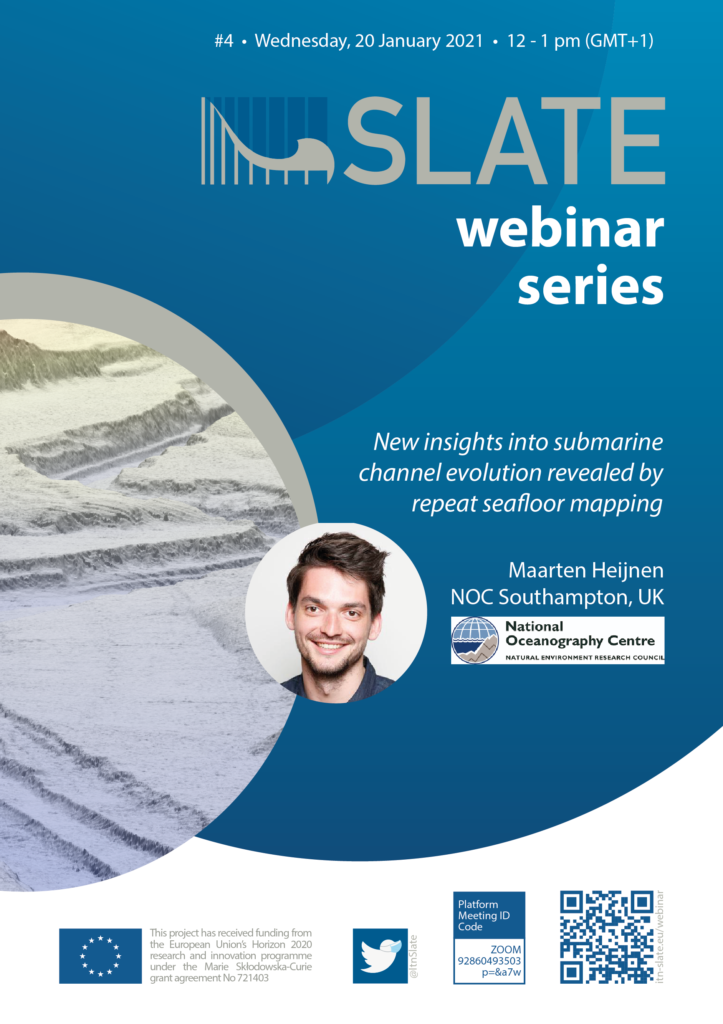
Submarine channels are an important pathway for land-derived sediment, organic carbon, nutrients, and pollutants into the deep-sea. However, submarine channels are difficult to study since satellite imagery has limited penetration beyond shallow water depths and the seafloor hugging density flows that traverse these channels (turbidity currents) can be destructive. These limitations ensure that we only have a limited understanding of how these systems evolve. Understanding the evolution of submarine channels is important in assessing geohazards for seafloor infrastructure, and determining the fate of land-derived material such as organic carbon. Here Maarten will present two unique sets of repeat seafloor surveys that provide new insights into the evolution of submarine channels and of how sediment is transported through them. First, a decade of seafloor surveys from an active submarine channel in Bute Inlet, British Columbia, Canada, reveals the dominant control of upstream-migrating knickpoints on channel evolution. These knickpoints are waterfall-like features that migrate upstream at rates between 100 and 400 m/yr. This migration results in an along-channel alternation of erosional and depositional zones. A new model for submarine channel evolution is proposed, with distinct differences to previous models, particularly those that draw analogues with onshore river systems. Second, two seafloor surveys of the Congo Fan system spanning two decades, reveal the important role played by upstream-migrating knickpoints for the first time in a major deep-sea channel system, as well as documenting the complex roles played by landslides and channel meandering. The relative contribution of these different processes relates to regional geological and internal system controls. This study reveal the complexities of sediment transport through submarine channels, and underlines the important roles played by different internal processes that control sediment transport, storage and ultimate fate. Also, this study reveals how new technology is providing important new insights into these remarkably dynamic and active systems that play a globally-important role in sediment transfer.
- Wednesday, 20 January 2021
- 12 pm – 1 pm (GMT+1)
- via ZOOM
- permanent Zoom Link
- ID: 928 6049 3503 Code: p=&a7w
Webinar Flyer:


